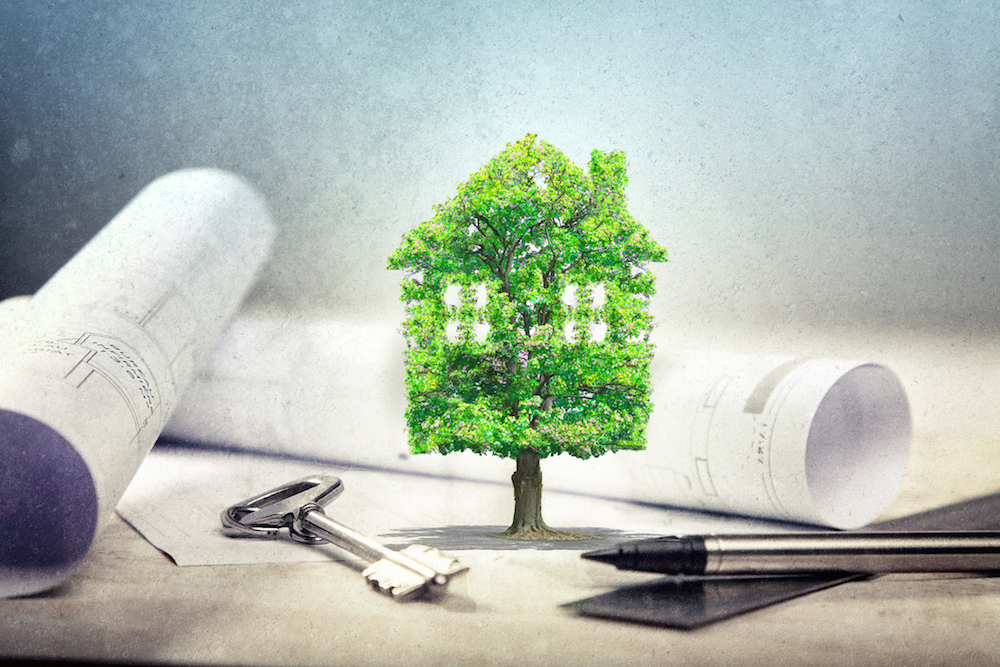8 Ways To Make Your Home More Eco-Friendly
It’s easy being green. Whether you’re washing your clothes exclusively in cold water or putting lights on timers, making small lifestyle changes and compromises helps our planet in big ways. Some changes are simple and require little to no cost, while others require a small amount of time and monetary investment to reap long-term benefits.
Making small changes to become more eco-friendly helps make Earth a better, greener place, but it also benefits your household and can save you money. Put these eight tips into practice to make your home more eco-friendly.
- Stop leaks. Installing environmentally friendly insulation can be one of the best energy saving changes you can make when going green. Attic insulation will help keep cool air in your house during the hot summer months, while exterior wall insulation prevents heat loss when outdoor temperatures drop. Also check your windows, doorways, and ducts for leaks, and repair them with a strong sealant. Then sit back, relax and watch your heating and cooling bills drop!
- Install a low-flow toilet. Stop flushing your water down the toilet, literally. One of the biggest household water wasting culprits is the toilet. Standard toilets use anywhere between 3.5 to 7 gallons per flush, while low-flow toilets use an average of 1.6 gallons.
- Use a power strip. Did you know that most electronics still use energy when they’re turned off but plugged into an outlet? Consider purchasing a power strip for your large electronics—TV, Blu-ray player, gaming consoles, computers—and turn off the power strip when those devices aren’t in use.
- Start composting. Whether it’s leftovers or scraps, a lot of food ends up in the garbage bin, which eventually adds to ever-growing landfills. Make the smart switch to composting by saving fruit and vegetable scraps, coffee grounds and eggshells, rather than trashing them. Add the saved scraps to a bottomless composting bin placed in a cool, shady portion of your yard. The pile should decompose within four to six months, and will be dark brown or black. Mix the compost pile into your flowerbeds or lawn for a natural, nutrient-packed fertilizer.
- Wash with cold water. The majority of energy used by washing machines comes from heating the water. Since washing clothes in cold water cleans your garments just as well as hot water, why waste that energy? Your household could eliminate around 1,600 pounds of carbon dioxide emissions per year by exclusively washing clothes in cold water.
- Switch light bulbs. Did you know Compact Fluorescent Light Bulbs (CFL) use 75% less energy than the standard incandescent light bulb? CFLs also last 10 times longer than the standard bulb. Why not save money while you save energy, too?
- Program your thermostat. Whether you’re sweating through the summer or shivering during the winter, investing in a programmable thermostat will help you save on heating and cooling costs. The programmable thermostat will also help you save energy, without sacrificing comfort.
- Time your lights. Are you planning on going out of town and want to leave a few lights on while you’re away? Instead of keeping the lights on 24/7, purchase a timer for your light fixtures to regulate when they’re in use.
Do you practice any of these eco-friendly tips? Share your favorites, and other energy-saving suggestions, in the comments.
- compact fluorescent light bulb benefits
- composting for beginners
- earth day tips for my house
- eco-friendly home
- eco-friendly house
- eco-friendly houses
- eco-friendly tips
- eco-friendly tips for my house
- going green house
- green homes
- is my house eco-friendly
- low-flow toilet benefits
- make my house eco-friendly
- ways to make my house eco-friendly
- what are the benefits of an eco-friendly home
- what is composting










